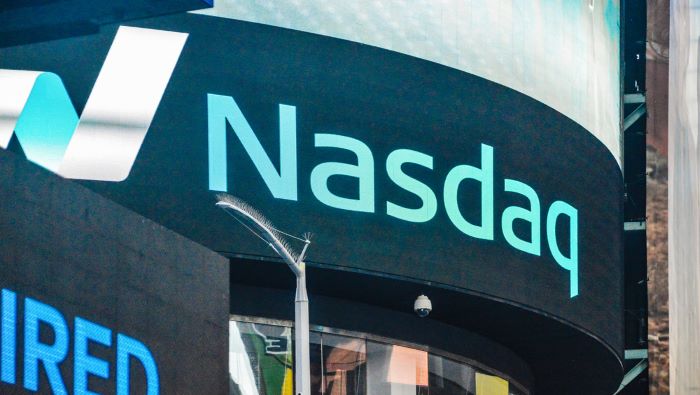Talking Points:
- More signs of slowdown in the U.K. as the post-Brexit, consumer-driven rally appears to be waning.
- While inflationary forces continue to creep-higher, the Bank of England appears un-moved, ready to stay at historically low rates as Brexit discussions continue.
- If you’re looking for trading ideas, check out our Trading Guides. And if you’re looking for ideas that are more short-term in nature, please check out our Speculative Sentiment Index (SSI) Indicator.
To receive James Stanley’s analysis directly via email, please SIGN UP HERE
In this week’s fundamental trading forecast for the British Pound, we used the phrase ‘Brexit permeation’ to signify how sentiment within the British economy as continued to erode as discussions around Article 50 have devolved deeper into a Parliamentary quagmire. The post-Brexit environment saw a brisk consumer-driven expansion of the British economy; but since December, we’ve seen a more-troubling theme of surprisingly disappointing data prints indicating that consumer strength has begun to wane.
Overnight, we received another piece of evidence from the British Retail Consortium that shows that British consumers may be getting more gun-shy: In February, like-for-like sales, excluding new store openings dropped by -.4%; well-beyond the expectation of -.2%. And this is on the heels of a disappointing print in January in which like-for-like sales dropped by -.6%. While these types of data prints can traditionally be noisy, the consecutive contractions combined with the eroding Services PMI gauge seen last week do not paint a pretty picture. As Brexit discussions have drug further-on with little by way of actual certainty, British consumers and investors appear to be responding with an increasing outlay of risk aversion.
Cited as a key reason for the drop in consumer spending was inflation and higher prices; and this has been the ‘elephant in the room’ for the British economy ever since the Brexit referendum. Before Brexit, Bank of England Governor, Mark Carney, warned that Brexit would cause a ‘sharp repricing’ in the value of the British Pound, which could then lead to higher rates of inflation, slower rates of growth and higher rates of unemployment. The ‘goto’ answer here would normally be to lower interest rates; but for the conundrum that the BoE found itself in, cutting interest rates further ran the risk of stoking even more inflation from an even sharper ‘repricing’ in the value of the British Pound.
But, at the rate meetings immediately following Brexit, this is precisely what happened. In August, the Bank of England triggered a ‘bazooka’ of stimulus. The British Pound dropped even-further, and this led to the ‘flash crash’ in early October when there was an absolute dearth of demand for the currency while it was trading near 30-year lows.
In November, we saw the Bank of England begin to acknowledge those stronger inflationary forces at their ‘Super Thursday’ event early in the month. This provided an iteration of strength to the currency, as the Pound was one of the few from around-the-world that was stronger than the U.S. Dollar in the month of the Presidential election. But this strength was short-lived as sellers took back over in December as even more uncertainty around Brexit came-about. And then after another quick dose of positivity in January after Theresa May’s ‘Brexit Speech’ and the U.K. Supreme Court ruling on Brexit, sellers returned, again, to push prices-lower.
The net impact of this back-and forth since December is a range-bound formation near a level of longer-term support; and this range is almost five months-old at this point.

Chart prepared by James Stanley
And below, we take a ‘big picture’ perspective going back 35+ years. There was but one iteration spanning approximately five months in which price action in the British Pound traded below this key level of 1.2000 on the U.S. Dollar; and that was back in 1984/1985. This led to the Plaza Accord which brought-upon a heavy dose of U.S. Dollar weakness, eventually leading to the spot rate on GBP/USD crossing the psychological level of 2.0000 only six years later.

Chart prepared by James Stanley
What Could Finally Bring ‘Lasting’ Strength to the British Pound (to break above the range)?
Inflation would be the common answer here, but this situation isn’t so cut-and-dry. The big driver for a top-side move would probably have to come from the Bank of England. At this point, it appears that the BoE is rather un-moved by these rising inflationary forces; and it seems as though the bank is heavily-against any interest rate hikes in the near-term, under the presumption that any hikes would further choke-off growth. This, of course, is somewhat of the catch-22 as British consumers, corporates and investors are likely at least somewhat affected by the BoE’s extreme caution and emergency-like monetary policy despite the seeming lack of execution or furtherance on Brexit discussions; and this has been the case ever since the referendum in June of last year.
So, to change the BoE’s tune, we’re likely going to need the steady and consistent build of inflation until, eventually, the bank capitulates. We’ve already seen some element of capitulation from the BoE when Chief Economist Andy Haldane called Brexit the economic profession’s ‘Michael Fish’ moment. Mark Carney is heavily-invested here; as the drastic and dramatic monetary policies enacted immediately after Brexit have only seemed to worsen the situation by driving the value of the British Pound even-lower, carrying a significantly higher-risk of inflation down-the-road.
The next BoE Super Thursday in which the bank shares inflation projections with markets is not until May. At the most recent Super Thursday in February, the bank actually cut their inflation forecasts; but curiously up-graded their 2017 growth forecasts by a full 42% (up to 2% from a prior expectation of 1.4%).
Until then, be careful of pushing the top-side of the pair as sellers have been rather persistent with GBP/USD trading near 30-year lows. And if looking to go short or add short-exposure, be careful of selling whilst near-30 year lows and, perhaps, wait until the resistance side of the range comes back into-play before looking at such a strategy.
The post-Brexit/Flash-Crash Range in GBP/USD

Chart prepared by James Stanley
--- Written by James Stanley, Analyst for DailyFX.com
To receive James Stanley’s analysis directly via email, please SIGN UP HERE
Contact and follow James on Twitter: @JStanleyFX







